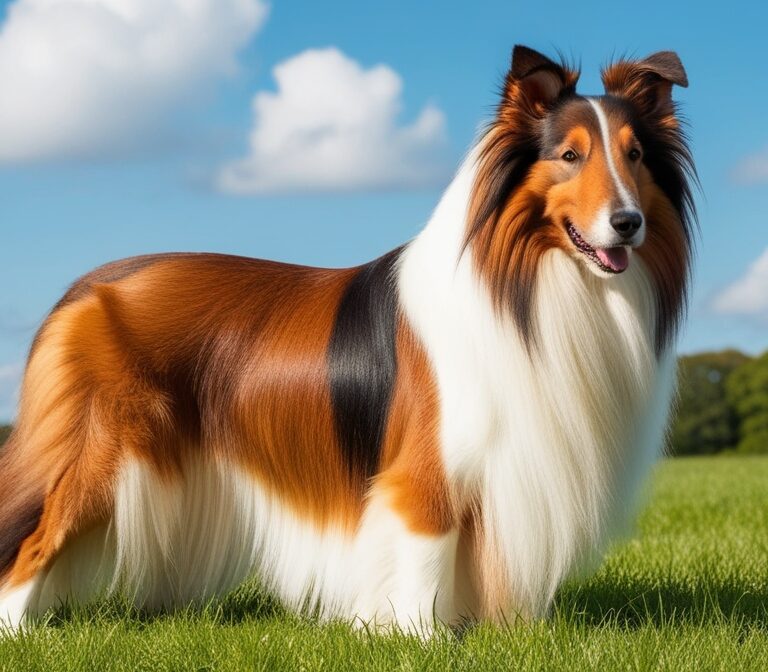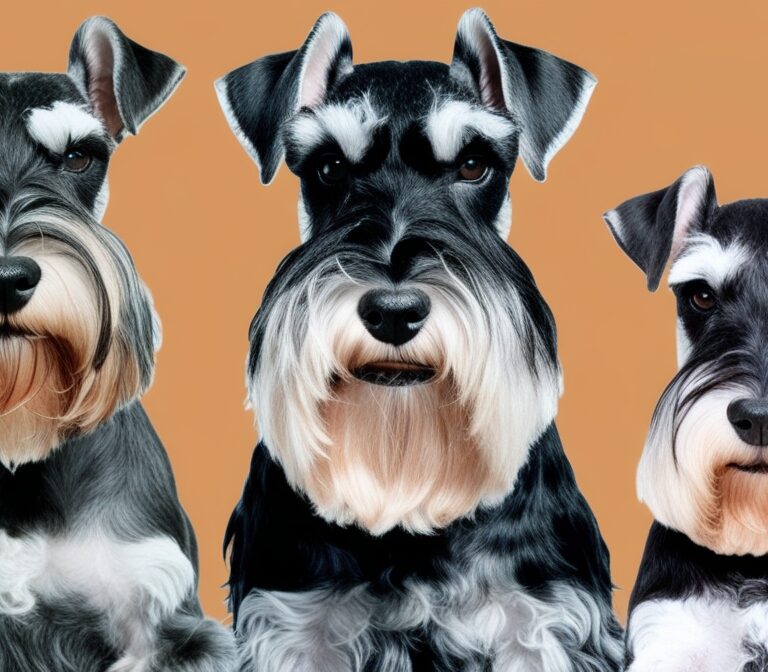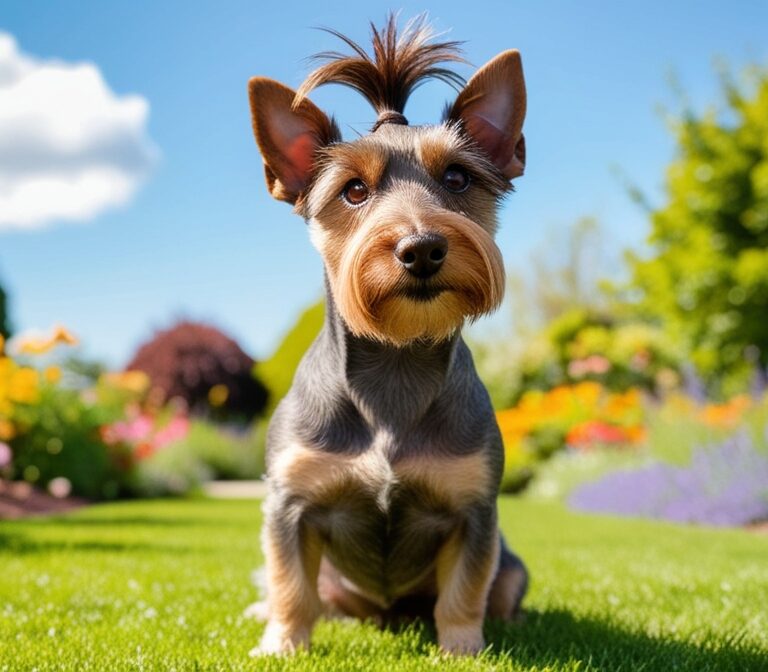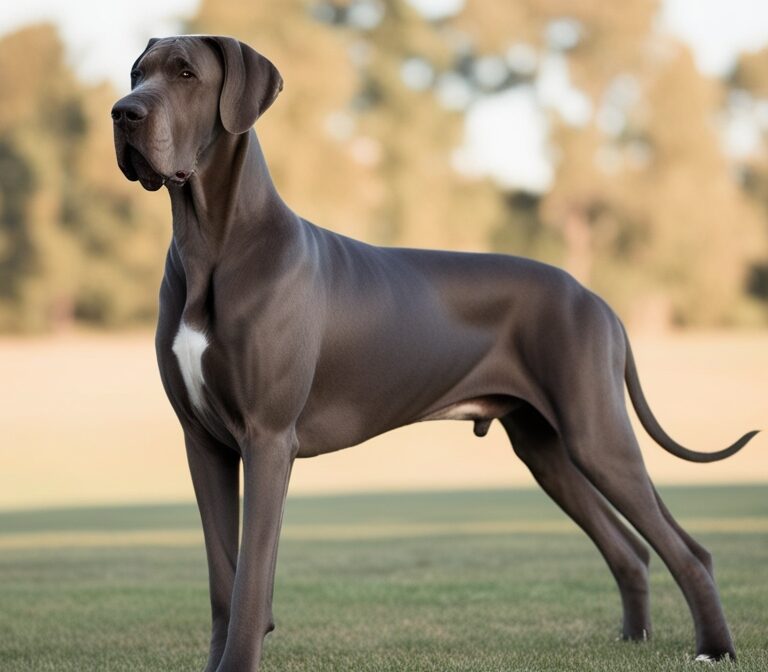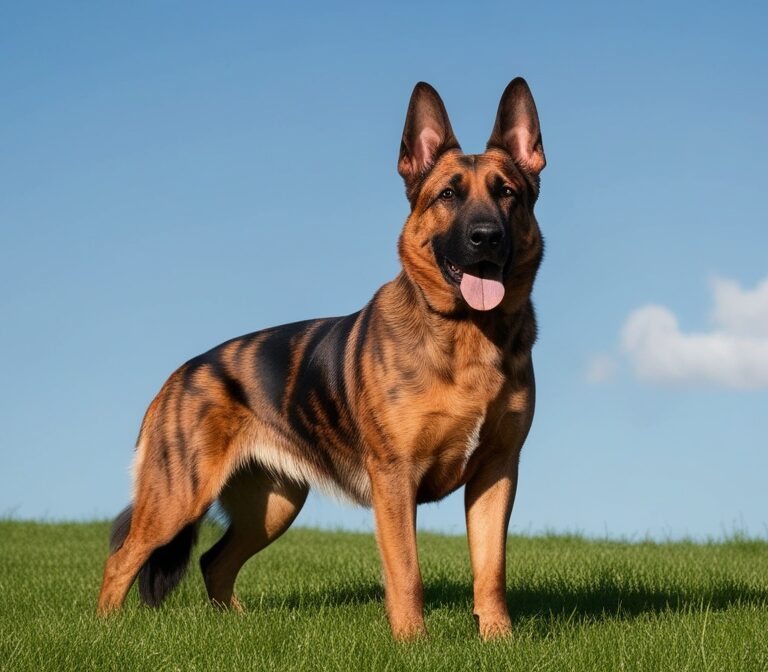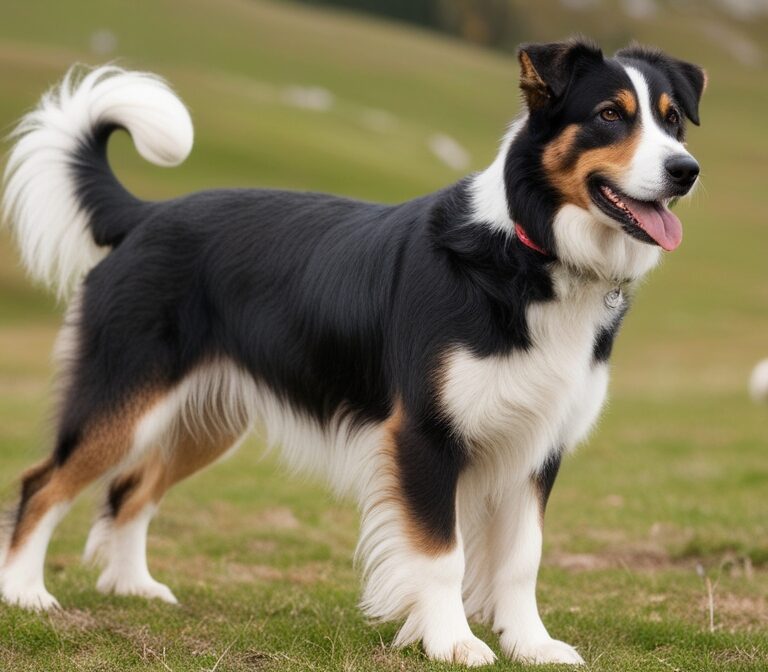Mastiff Dog: Complete Guide to the Gentle Giant
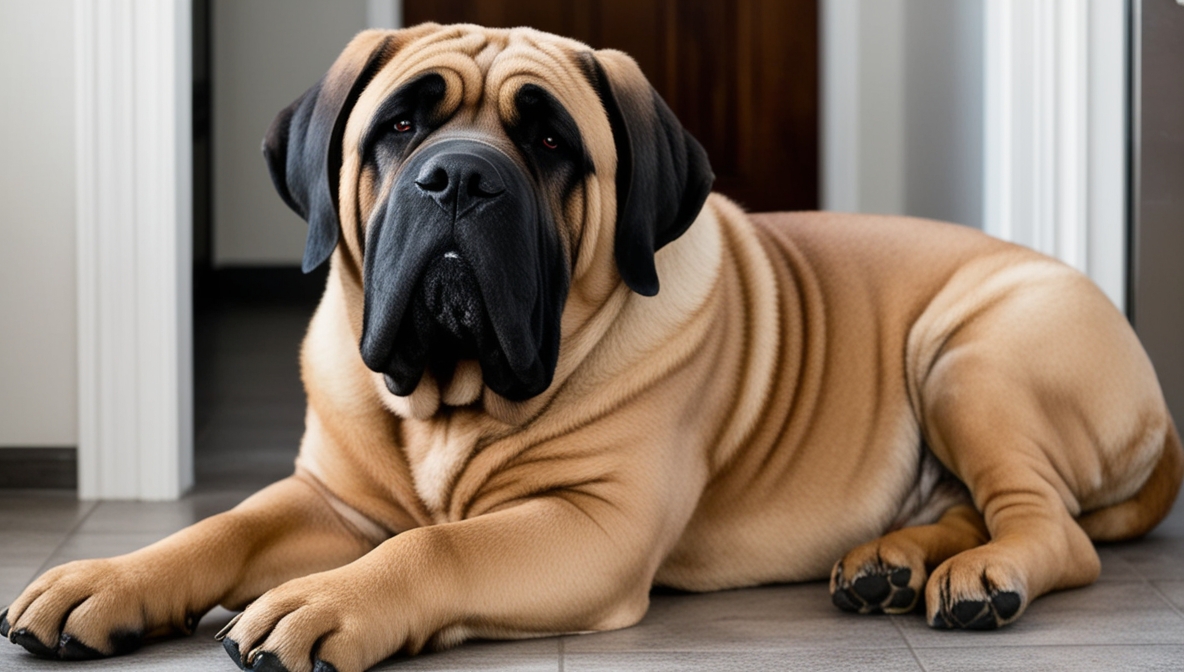
Introduction to the Mastiff Dog
The Mastiff dog, often referred to as the English Mastiff, is one of the world’s oldest and largest domesticated dog breeds. Known for its immense size, protective instincts, and gentle temperament, this breed has captured the attention of families, breeders, and canine enthusiasts alike. Classified under the category of giant dog breeds, the Mastiff is renowned not only for its physical power but also for its affectionate nature.
The Mastiff’s role throughout history has been diverse. From ancient war dogs to modern-day family protectors, Mastiffs have consistently been associated with loyalty, courage, and guardianship. Today, they are recognized as both companions and guard dogs, combining their historical traits with a calm, family-friendly personality.
In the canine world, Mastiffs stand apart due to their weight range of 54–100 kg (120–220 lbs) and their ability to bond deeply with humans. Their appearance is unmistakable: a massive head, droopy facial folds, and a muscular yet proportionate body. Despite their intimidating look, Mastiffs are affectionately known as “gentle giants”—protective but rarely aggressive without cause.
Owning a Mastiff requires commitment. Because of their size, they need proper training, early socialization, and careful dietary management to maintain optimal health. Their exercise requirements are moderate compared to other working breeds, but they thrive in environments that allow them space to move freely.
This article explores every aspect of the Mastiff dog—from its origins and breeds to care, training, temperament, and ownership costs. By the end, you’ll have a detailed understanding of whether the Mastiff is the right dog for your lifestyle.
Origin and History of the Mastiff Breed
The Mastiff breed has one of the longest and most fascinating histories among domestic dogs. Tracing back over 3,000 years, Mastiff-like dogs appear in records from ancient civilizations such as Egypt, Greece, and Mesopotamia. They were revered for their strength and courage, often used as war dogs, hunting companions, and guardians of property.
Historical evidence shows that Mastiffs accompanied Alexander the Great during his campaigns, while in ancient Rome, they were employed in arenas to fight lions and gladiators. The breed’s reputation as a fearless protector became so ingrained that many cultures considered Mastiffs symbols of power and nobility.
In England, Mastiffs were historically employed as estate guardians and gamekeepers’ assistants. Their primary purpose was to protect livestock and property against wolves, bears, and even intruders. Over centuries, they became a cornerstone of British dog culture, eventually giving rise to the English Mastiff we recognize today.
Interestingly, many modern giant breeds owe their lineage to Mastiff ancestry. The Bullmastiff was developed in the 19th century by crossing Mastiffs with Bulldogs to create a more agile estate guard. The Neapolitan Mastiff, with its loose skin folds, shares roots with ancient Roman war dogs, while the Tibetan Mastiff traces back to the Himalayas, serving as both flock protector and temple guardian.
During the World Wars, Mastiff populations nearly went extinct due to food shortages. Dedicated breeders, however, revived the breed post-World War II, reestablishing its popularity worldwide. Today, Mastiffs are recognized by major kennel clubs, including the American Kennel Club (AKC) and the United Kennel Club (UKC), as one of the most loyal and majestic large breeds in existence.
Understanding the Mastiff’s history provides context for its protective instincts, size, and temperament, making it clear why this breed is revered as both a guardian and a companion.
English Mastiff: The Gentle Giant
The English Mastiff is the breed most commonly associated with the term “Mastiff.” This giant dog embodies the characteristics that make Mastiffs so appealing—dignity, calmness, and loyalty. With males often weighing 160–230 lbs (73–104 kg) and standing up to 30 inches tall at the shoulder, the English Mastiff is one of the largest dog breeds in the world.
Despite its imposing presence, the English Mastiff is famously known as a gentle giant. Their protective instincts are strong, but aggression is rare unless provoked. When raised with proper socialization and training, Mastiffs are calm around strangers yet deeply affectionate with their families.
Physically, the English Mastiff has a broad head, short muzzle, deep chest, and strong muscular frame. Their coats are short and dense, commonly seen in fawn, apricot, or brindle patterns. Their expressive, dark eyes and wrinkled forehead often give them a thoughtful, almost human-like appearance.
One unique aspect of the breed is its low activity level compared to its size. While they need daily walks and opportunities for play, English Mastiffs are not hyperactive. They are more inclined to relax near their owners, making them excellent indoor companions if provided with enough space.
Health-wise, the English Mastiff requires careful monitoring of diet and exercise. Their rapid growth during puppyhood makes them prone to hip and elbow dysplasia, while their deep chests predispose them to bloat (gastric torsion). Regular vet check-ups, high-quality large-breed food, and controlled exercise routines are essential for their well-being.
As family dogs, English Mastiffs thrive in households where they receive attention, affection, and leadership. They are especially good with children, often forming strong protective bonds. However, due to their size, supervision is necessary to prevent accidental injuries.
The English Mastiff embodies the perfect balance of strength and gentleness, making it one of the most respected breeds in canine history.
Overview of Other Mastiff Breeds
While the English Mastiff is the most recognized member of the Mastiff family, the term Mastiff breeds actually refers to a group of large working dogs sharing common ancestry. These breeds have been developed across different regions, each with unique physical traits and temperaments, but all maintaining the core Mastiff qualities: strength, loyalty, and protectiveness.
- Bullmastiff: Developed in 19th-century England, the Bullmastiff is a cross between the Mastiff and the Bulldog. It was bred to guard estates and gamekeepers, combining the Mastiff’s size with the Bulldog’s agility. Bullmastiffs are slightly smaller than English Mastiffs, usually weighing 100–130 lbs, and are highly protective yet gentle with family.
- Neapolitan Mastiff: Originating from Italy, this breed is famous for its wrinkled skin and loose folds. Neapolitan Mastiffs are natural guardians, known for their intimidating appearance and deep, powerful bark. They are loyal family protectors but require consistent training and socialization due to their dominant tendencies.
- Tibetan Mastiff: One of the oldest Mastiff breeds, the Tibetan Mastiff comes from the Himalayas, where it served as a flock guardian and monastery protector. With its dense double coat and lion-like mane, it is well-adapted to cold climates. Tibetan Mastiffs are highly independent and can be aloof with strangers, making them less suited to inexperienced owners.
- French Mastiff (Dogue de Bordeaux): This French breed gained worldwide recognition from the movie Turner & Hooch. Known for its massive head and muscular build, the Dogue de Bordeaux is affectionate yet protective. Unlike the English Mastiff, it is more active and requires firm training to control its strong-willed nature.
- Spanish Mastiff: Traditionally used as a livestock guardian dog in Spain, the Spanish Mastiff is one of the heaviest Mastiff breeds, often exceeding 200 lbs. It is calm, protective, and particularly bonded to its flock or family, making it a reliable working dog.
Together, these breeds highlight the diversity of the Mastiff lineage. While their appearances vary—from the wrinkled Neapolitan to the majestic Tibetan—their core traits of courage, protection, and loyalty remain constant.
Physical Characteristics of Mastiffs
The Mastiff dog stands out immediately because of its giant size and distinct features. Adult males often weigh between 160–230 lbs, while females typically fall between 120–170 lbs. Some exceptional Mastiffs have even surpassed 250 lbs, earning them recognition as one of the heaviest dog breeds in the world.
Their bodies are broad, muscular, and powerful, built for guarding and endurance rather than speed. A typical Mastiff has a rectangular frame, deep chest, and thick neck, giving them an imposing presence. Their gait is steady and deliberate, reflecting their calm yet watchful nature.
Coat and Colors
Mastiffs have a short, dense coat that lies close to the body. Common coat colors include:
- Fawn (light beige with black mask)
- Apricot (reddish-brown with black mask)
- Brindle (striped pattern with black mask)
The black mask on the face is a defining trait of most Mastiff varieties, emphasizing their strong, square muzzle.
Distinctive Features
- Head: Large, square, and broad with pronounced wrinkles, especially when alert.
- Eyes: Dark, expressive, and medium-sized, giving a dignified appearance.
- Ears: Small, V-shaped, and set high on the head.
- Tail: Thick at the base, tapering toward the end, usually carried straight or slightly curved.
Size Considerations
Due to their immense size, Mastiffs require spacious living environments. Their large bodies are prone to joint issues, so hard surfaces and excessive stair climbing should be avoided, especially during puppyhood.
Despite their intimidating looks, Mastiffs move gracefully and rarely display clumsiness. Their gentle giant image is perfectly reflected in their physical traits: strong enough to protect, yet calm enough to live harmoniously in family settings.
Mastiff Temperament and Personality Traits
The Mastiff temperament is a defining feature of the breed. Although their size suggests dominance and aggression, Mastiffs are known for being affectionate, loyal, and calm. They form deep emotional bonds with their families and are often described as dignified and good-natured.
Key Personality Traits:
- Protective: Mastiffs are natural guardians. Their sheer size and intimidating presence are usually enough to deter intruders without any aggression.
- Affectionate: Despite their giant frame, Mastiffs love physical closeness. They enjoy leaning against their owners, sitting near family members, and being constant companions.
- Gentle with Children: Properly socialized Mastiffs are excellent with kids, often displaying patience and protective instincts. However, supervision is necessary due to their size.
- Calm and Reserved: Unlike high-energy working breeds, Mastiffs prefer relaxation and steady routines. They are not hyperactive but will defend their family fearlessly if necessary.
- Stubborn but Intelligent: Mastiffs are intelligent, but they can be independent and sometimes stubborn. Training requires patience, consistency, and positive reinforcement.
Mastiffs are also sensitive dogs. Harsh training methods can damage their trust and reduce responsiveness. Instead, they thrive in environments where owners establish calm leadership.
One notable aspect of their temperament is their alertness without unnecessary barking. Mastiffs are not excessive barkers, but they will quickly sound the alarm if they sense a threat.
Overall, the Mastiff’s personality combines strength and gentleness, making them ideal family guardians. Their protective instincts, paired with affection and loyalty, explain why they are often called gentle giants of the dog world.
Mastiff as a Family Dog: Pros and Cons
Choosing a Mastiff as a family dog comes with many advantages but also some important considerations. Families considering this breed must evaluate whether their lifestyle aligns with the Mastiff’s needs.
Pros of Having a Mastiff in the Family
Protective Nature: Mastiffs instinctively guard their home and family, providing a strong sense of security.
Gentle with Children: They are remarkably patient with kids and often act as protectors, making them suitable for families with children.
Affectionate Companions: Mastiffs thrive on human interaction and form strong emotional bonds with family members.
Calm Indoor Behavior: Despite their size, they are relatively low-energy indoors and enjoy spending time with their family rather than constant activity.
Cons of Having a Mastiff in the Family
Size-Related Challenges: Their enormous size means they can unintentionally knock over children or small furniture. Families must be cautious during playtime.
High Food and Care Costs: Mastiffs eat significantly more than average breeds, and medical expenses for large dogs tend to be higher.
Shorter Lifespan: Most Mastiffs live 6–10 years, which is shorter than smaller breeds. Families must be emotionally prepared for this reality.
Space Requirements: They are not ideal for small apartments. Mastiffs do best in homes with ample space or secure backyards.
Stubbornness in Training: Their independent nature means training requires patience and consistency.
When integrated into the right family, Mastiffs become loyal protectors and affectionate companions. However, potential owners must be ready for the responsibility of managing a giant breed, ensuring their health, diet, and exercise needs are met.
Conclusion:
The Mastiff dog stands as a timeless example of strength, loyalty, and gentleness combined in one extraordinary breed. From its origins as an ancient war dog and estate guardian to its present role as a beloved family companion, the Mastiff has consistently proven its value to human society. Its reputation as a gentle giant is well-earned, blending intimidating physical presence with an affectionate, protective temperament.
For families seeking a dog that provides both companionship and security, the Mastiff is an outstanding choice. Its natural guarding instincts offer peace of mind, while its calm and good-natured personality ensures harmony within the home. Children often benefit from the Mastiff’s protective yet patient nature, and owners quickly learn that despite their massive size, these dogs often prefer cuddles and quiet moments over constant activity.
However, choosing a Mastiff requires serious consideration. This is not a breed suited for everyone. Potential owners must be prepared for:
- High ownership costs, including food, veterinary care, and large-breed accessories.
- Shorter lifespan, typically between 6–10 years, which can be emotionally challenging.
- Space requirements, as Mastiffs thrive best in homes with ample room and secure yards.
- Training and socialization needs, since their size makes proper behavior essential from an early age.
Despite these challenges, the rewards of owning a Mastiff are profound. Their loyalty is unwavering, their presence is commanding, and their ability to bond with family members is unmatched. Unlike some giant breeds that demand constant activity, Mastiffs are relatively low-energy indoors, making them excellent companions for households that value quiet strength and steady companionship.
Comparisons with other Mastiff breeds—such as the Bullmastiff, Tibetan Mastiff, Neapolitan Mastiff, Dogue de Bordeaux, and Spanish Mastiff—highlight the diversity within the Mastiff lineage, but all share the common threads of courage, dignity, and devotion. Choosing the right type depends on whether you prioritize a watchdog’s agility, a guardian’s independence, or a family protector’s gentleness.
In the end, the Mastiff is more than just a dog—it is a symbol of guardianship, loyalty, and unconditional love. For the right family, a Mastiff is not simply a pet but a lifelong protector and companion. If you have the space, patience, and dedication to meet the needs of this giant breed, the Mastiff will reward you with affection, loyalty, and a bond unlike any other in the canine world.
Final Answer: A Mastiff dog is the right choice if you seek a protective yet affectionate family guardian, can accommodate its size and care needs, and are committed to providing consistent training and healthcare. For those who meet these conditions, the Mastiff will truly become the heart of the home—a gentle giant devoted to love and protection.
